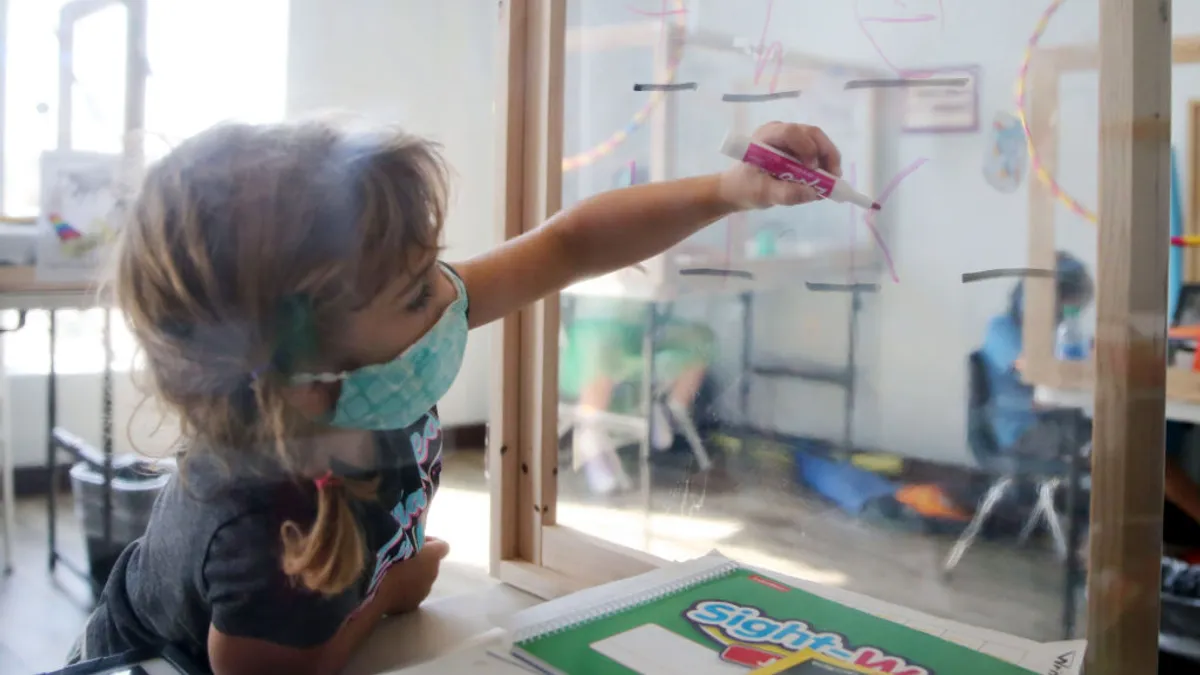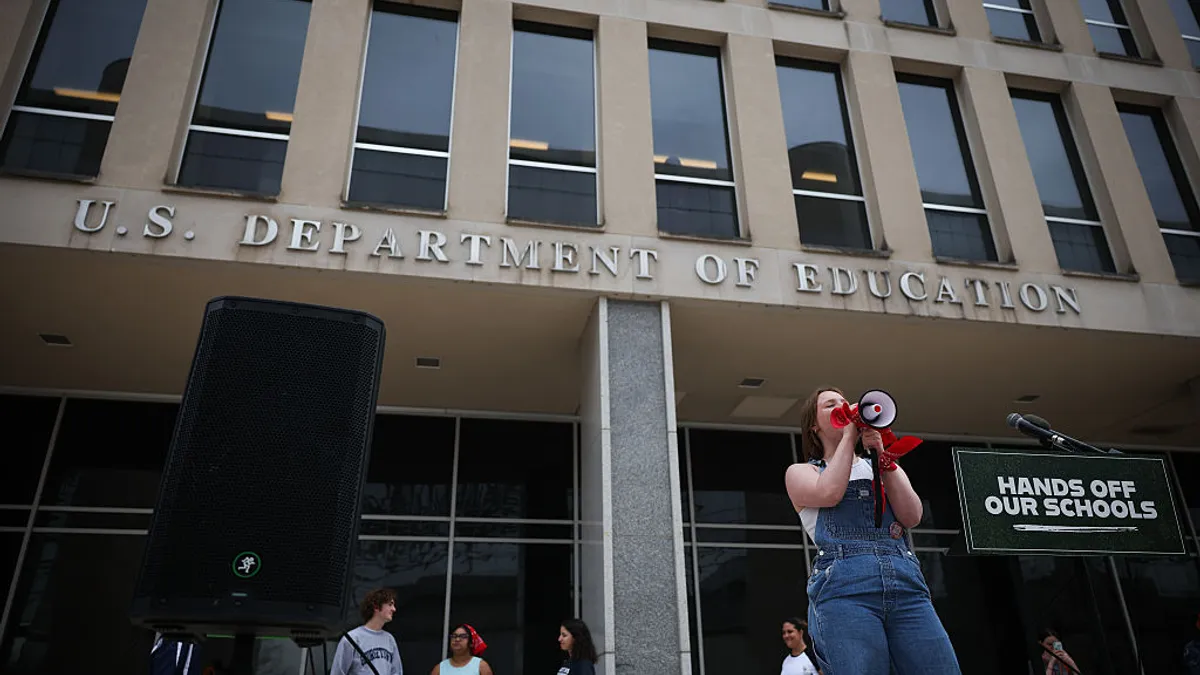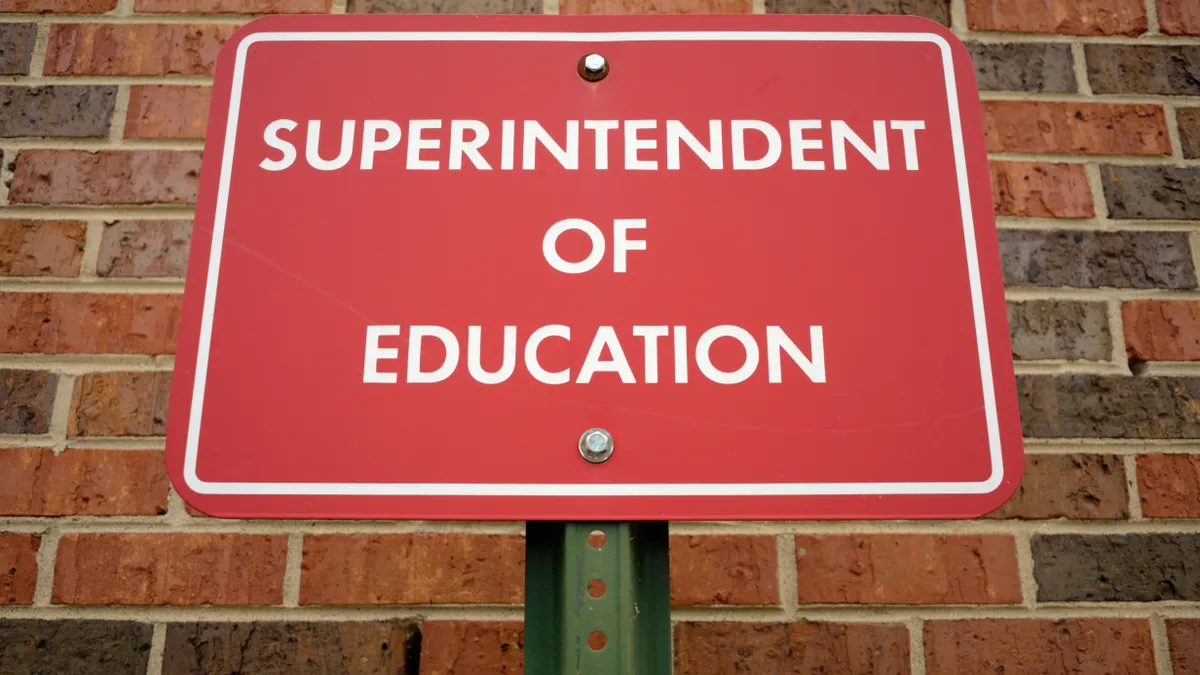When Fred Rundle learned Hamas had attacked Israel on Saturday, Oct. 7, the Washington state school superintendent knew what he had to do. The following Monday morning, he sent a message to staff, students and families in his Mercer Island School District to try to ward against any rise in antisemitic and Islamophobic acts.
“Mercer Island is home to families with cultural ties to Israel, Palestine, and the geopolitical region known as the Middle East,” Rundle wrote. “While we may hold different or congruent opinions about the years of war and conflict, I worry that the escalation this weekend will spark a rise in Antisemitic and Islamophobic incidents in our own community.”
Based on past experiences, Rundle had some reason to worry. In October 2022, a student at the district's Islander Middle School made antisemitic remarks to another student. In 2019, images of students raising a Nazi salute were shared on social media.
A week after his message on Oct. 9, Rundle sent another, in the wake of an Oct. 13 call from Hamas to commit acts of violence against Jewish people globally. Rundle wrote that security would be posted on campuses and said students who were uncomfortable attending school should notify their school.
The threats from Hamas, he wrote, heightened already growing concerns for both the Jewish and Muslim communities.
“We have had our challenges with antisemitism,” Rundle said. “And we’ve had a history of being reactive to these things. I’ve worked really hard to be proactive and send a message that we’ll continue to condemn antisemitism and Islamophobia or any other hate speech.”
Mercer Island sits along Lake Washington and is connected by an interstate highway bridge to Seattle. The district serves about 4,000 students. The island is home to one of Seattle’s largest Jewish populations. Antisemitism has been enough of an issue on the island that the city council officially reaffirmed its commitment to reject bias based on religion in a 2021 proclamation.
Nationwide, between Oct. 7, the day Hamas attacked Israel, and Oct. 24 there was an almost 400% increase in incidents of antisemitism year over year, according to the Anti-Defamation League, a leading antisemitism advocacy organization. The 312 incidents include reports of harassment, vandalism and assault.
During the same two-week period, there were 774 complaints of Islamophobia, according to the Council on American-Islamic Relations, the nation’s largest Muslim civil rights organization. By comparison, CAIR received only 63 complaints in the month of August.
For teachers and administrators, the outbreak of war between Israel and Hamas has become another reason to worry about antisemitic and Islamophobic speech, bullying and harassment.
Here are some ways they are addressing antisemitism and Islamophobia in schools.
Confronting hate through education
Helping students to understand and confront hate in general — and antisemitism and Islamophobia in particular — is at the heart of educational equity, said Julie Goldman, director of equity curriculum and instruction with the San Diego County Office of Education.
The district curates guides with resources, either developed internally or by outside organizations, to help educators counter extremism by allowing students to hear about the experiences of Jewish and Muslim people.
“It’s also preventative,” she said. “Teachers can ask themselves how they are creating schools that are truly inclusive and welcoming.”
Resources to address antisemitism through instruction include, among other things, diversity within Judaism and how anti-Judaism evolved into antisemitism. Resources to address Islamophobia in schools include education for teachers about how to support students during Ramadan and an interactive high school lesson about Islamophobia created by the Southern Poverty Law Center.
“I want students to be exposed to many different kinds of families,” Goldman said. “If we do that work, it is going to impact the antisemitism and hate in general.”
Shortly after the ADL released its audit earlier this year, the U.S. Department of Education launched an antisemitism awareness campaign including, among other steps, technical assistance for states and school districts to develop resources like those in San Diego. Early last month, the White House announced plans to develop the nation’s first strategy to counter Islamophobia.
But Goldman said it’s the application of resources, not the resources themselves, that will make the difference.
“It’s not the curriculum that drives the instruction,” she said. “Teachers need to ask, ‘Who are the students that are in my class? How can I help students and their families feel seen, heard and valued?’”
Reach out to partners
ADL state chapters also partner with school districts to create student-led conversations about bullying and discrimination. Called No Place for Hate, the program organizes school-based work around common goals and encourages a commitment to define and achieve goals.
In May, the ADL stepped in to help Cherry Creek School District, located southeast of Denver, when some students at Campus Middle School drew swastikas on their arms and legs after a lesson about the Holocaust. A parent at the school wrote a letter to district Superintendent Christopher Smith to say that antisemitism in the district is so bad that one Jewish family left the district as a result and another told her children not to tell anyone they are Jewish.
According to the ADL, students in Cherry Creek have reported being subjected to taunts, including that they should be thrown into gas chambers.
ADL staff joined district leaders at a May 2023 school board meeting to share ideas about improving campus culture, such as how to support teaching about disrupting bias and antisemitism.
The district acts “swiftly to investigate and students found to be responsible face discipline,” Abbe Smith, chief communications officer for the Cherry Creek district, said in an email. “We also have several partnerships and programs that we use to engage students in staff in identifying and combating antisemitism and all forms of racism.”
Partnerships are crucial for Mercer Island schools, too. Superintendent Rundle said he consults with the regional ADL, the city’s Jewish Community Center and parents in the school community to address issues that arise and help create clear messaging.
“I had a conversation with parents in the Muslim community as well as a rabbi to convey my original messaging,” Rundle said about the message he sent out in early October. “I asked, ‘Can you help me say this in a different way?’”
The Israel-Hamas war was going to have an impact on the school community, Rundle said. He kept in touch with leadership at the Jewish Community Center to talk about students who were studying abroad in Israel and how to get them home. The students have since returned home safely.
Muslim students need support too, says Farah Afify, Research and Advocacy Coordinator for CAIR. Earlier this month, a 7th-grade Muslim student was attacked by two fellow students on their way home from school in San Francisco. One of the students allegedly used an Islamophobic slur during the attack. In October, a man drove into the parking lot of a Muslim K-12 school in New Jersey and yelled death threats at parents. He came back and repeated the threats the next day.
Afify says that CAIR recommends classroom teachers use available resources to address Islamophobia.
Muslim students are also bullied at high rates, according to a 2022 report by the Institute for Social Policy and Understanding. To address these incidents, the Islamic Networks Group in San Jose, California, has developed resources to help educators understand what Islamophobic bullying looks like and what to do about it.
“It is important now more than ever that educators are not only attuned to the potential challenges that these students are experiencing,” she says, “but also that they actively work to identify and address Islamophobia and anti-Arab bias, whether intentional or unintentional.”
Make reporting easy
Social media, as all educators know, has a way of amplifying issues that take place between students. Online hate speech might occur over the weekend. The consequences, however, show up Monday at school.
It’s nearly impossible to keep track of all that is happening online, but educators can use technology to set up ways for students to report disturbing incidents.
Mercer Island schools use the Say Something app, developed as part of the Sandy Hook Promise as a way for students to anonymously report potentially concerning behavior.
Nationally, there are tools for reporting antisemitism and Islamophobia. The Anti-Defamation League offers a process for reporting antisemitism, and CAIR has a portal for reporting incidents of Islamophobia.
“We’re trying to get healthier as a system,” Rundle says. “All students need to belong. All students need to have a voice. All students deserve a safe environment.”





















